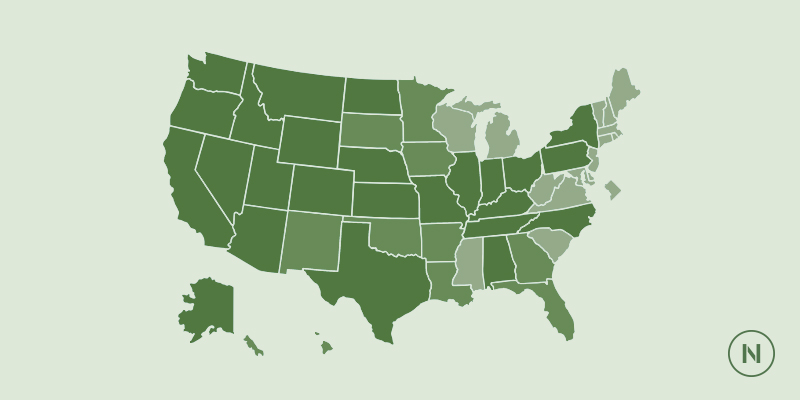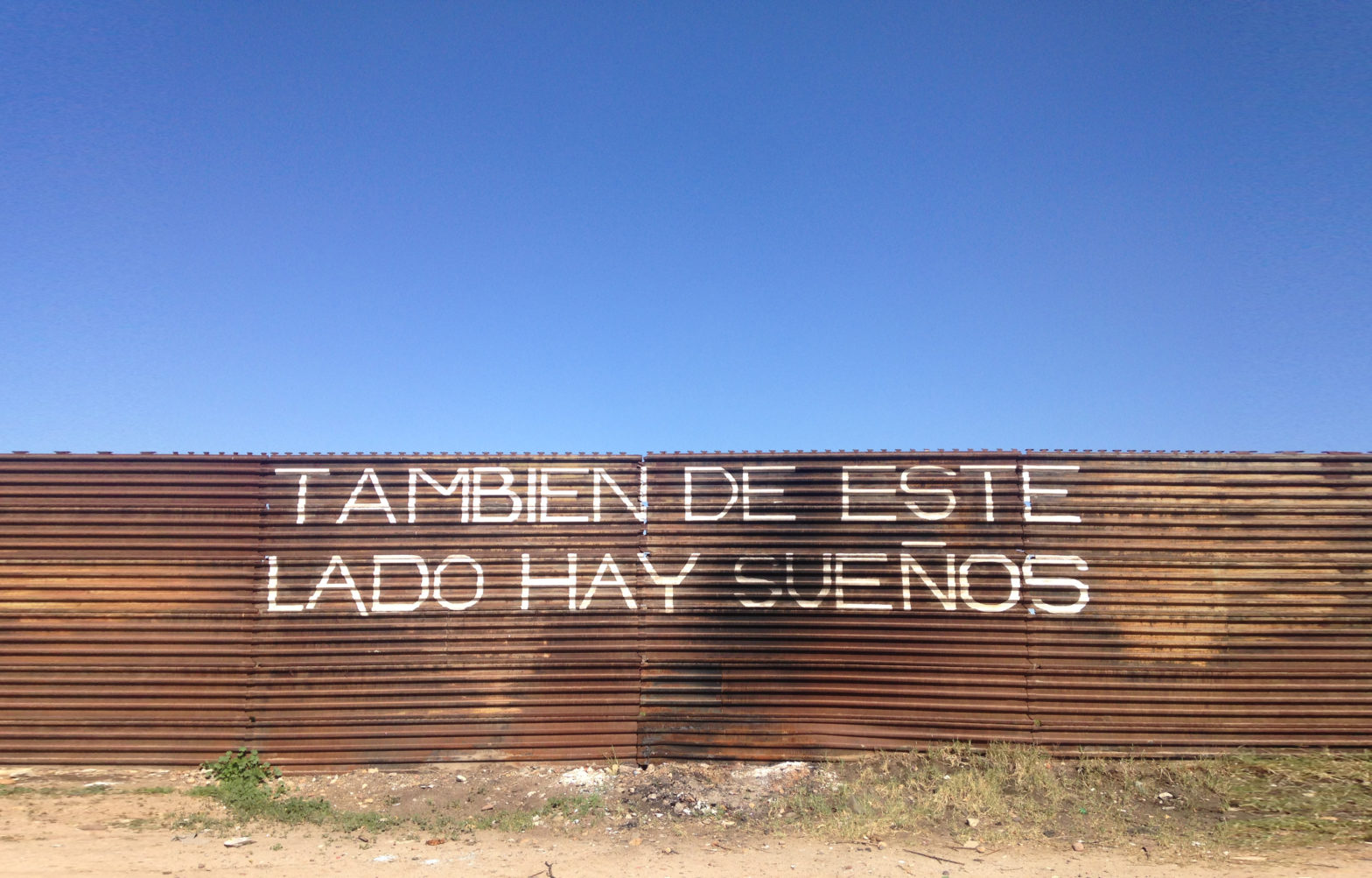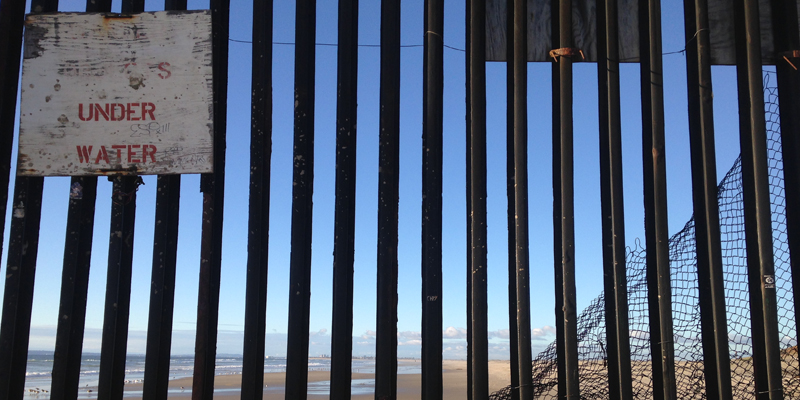



Tijuana
14 February, Tijuana
Al salir del aeropuerto de Tijuana lo primero que se ve es el muro que marca la frontera entre México y Estados Unidos, como un recordatorio de en donde se está parada. Si se sigue el muro hacia el oeste se llega a playas de Tijuana, en donde el muro termina entre el mar que corroe los barrotes ya oxidados, y pájaros volando libremente sin una frontera que los impida moverse, para ellos el muro es simplemente un buen lugar para pararse y tal vez cagar.
Primeras impresiones de Tijuana. The ridiculousness that is the Cross-Border Xpress, for 15 dollars you can skip the lines and walk from the Tijuana Airport to San Diego. Immediately confronted with the reality that the border only exists as an obstacle for those without resources.
Y pues, the Pinche. Fucking. Wall.
It’s only a few minutes drive until it appears, this massive looming symbol of inequity.
How intense to live in a city with a material reminder of injustice, colonialism and capitalism!
Luckily, we have an amazing guide, a self-described lencha* luchadora whose got her finger on the pulse of all kinds of resistance happening in Tijuana. Yali is the first of many generous souls who offer their time, their homes, their resources to us. In exchange for tacos and gas money, she’s going to show us around the next few days and help us meet up with activists, medical providers.
Less than an hour after we landed, on the car ride to Las Playas, I had to take my first try at explaining myself—why is a white guy working on this project? It didn’t go super smoothly, but not bad for a first try.
*slang for lesbian
15 February, Tijuana
Our first morning we headed straight for the corner where the wall meets the ocean on the TJ side. It’s very strange being right up next to the wall. You can see the US side—grassland, rocks, scrub. And construction equipment. Meanwhile it’s very lively on the Tijuana side—art everywhere, people walking dogs, kids kicking a ball around, soldiers taking in the view. The wall extends a surprisingly short distance into the water. We heard rumors there’s spikes or electric traps under the water to catch swimmers. More than likely bullshit but it’s pretty interesting that people have created this cruel obstacle in their imaginations, and that it seems like the sort of thing that the US government might do.
Later, after sunset, we came back to that same corner, on our way back to our place. We’re taking pictures and recording sound, just getting into it when a man rides up on his bike. “Veen los sapos?” (“Have you seen the frogs?”). We haven’t seen them but we’re hearing them—Eee ee ee ee. He helpfully shines a flashlight around in the bushes. Later we recognized him as the parking lot attendant who spends his days helping people park in the shade there, literally in the shadow of the wall.
Nuestra visita a Tijuana tuvo un fin específico, conocer a las integrantes de las colectivas de acompañantes que trabajan en Tijuana informando a mujeres en busca de un aborto. Después de mucho tiempo de planeación ahí estábamos nosotros, caminando rumbo al segundo encuentro entre colectivas de acompañantes de Baja California. Mientras caminábamos y como una especie de pista que revelaba que nuestro camino era el correcto, encontramos en un poste un anuncio que decía “Línea telefónica de aborto seguro en Tijuana. Las Confidentas”.
We spend hours exploring the wall, touching it, taking pictures, recording sounds. It’s surreal. The constant roar of the tide, the rapid pulse of the helicopters monitoring, the croak of toads that live alongside, insisting that life persists despite the cold heavy metal division.
16 February, Tijuana
We dive into interviews and meetings. We attend an encuentro with compas from all over the state organizing in a network of acompañantes. There’s a diversity of women present. There strategies are different, but they are all fiercely committed to helping people access abortion care whatever way possible. The first item on the agenda is their reaction to a state senator who is proposing tightening the already restrictive abortion laws in the state. Not even in the case of incest or rape?
Conocimos a Las Centinelas, Las Siempre Vivas, Las Confidentas y a las Bloodys, colectivas que viven en diferentes ciudades de B.C. en donde el aborto es ilegal. Su lucha por el libre derecho a decidir se hace a través de flyers pegados en postes, en redes sociales, haciendo grafitis en plena luz del día, entre compas, facilitando talleres y haciendo redes no solo en su estado, sino con colectivas de toda la República. Su lucha es pública, sucede en la calle y a la vez en el anonimato del internet.
My second attempt to explain who I am and why I am here goes much better. Kept it short and sweet, even got a laugh. After the meeting, in rapidly fading light we heard some stories from two of the women who were willing to share their stories of accompaniment and abortion. A very moving shoot. I will always love a good chuckle in the middle of a tough abortion story.
17 February, Tijuana
A fairly intense shoot at night, trying to keep up with Las Confidentas as they rampage around the town. They somehow had the energy for an hour-long interview after everything. I appreciate that a lot. Some amazing stories, a very impressive group. Now I’m too tired to write much.
Las Confidentas viven en Tijuana, una ciudad que parece improvisada, que se fue comiendo los cerros que están alrededor, y que tiene una población cambiante que la hace única. Ellas, las Confidentas, son mujeres jóvenes que ocupan su tiempo libre en la colectiva, cada una tiene un origen distinto. Algunas de ellas abortaron hace años, otras entraron al movimiento pro aborto después de la militancia en movimientos de izquierda. Todas coinciden en una cosa: ser acompañante significa estar ahí para decirle a las mujeres que buscan un aborto que van a estar bien.
We spend time with several different collectives, we talk about the migrant caravan because they’ve all rallied in some way to support the newest arrivals to their city. They’re bold in their attempt to get information out. We follow them as they leave tiny pamphlets about how to self-manage an abortion in a public restroom, as they graffiti a safe abortion hotline number on the side of the pinche wall, and we marvel at their audacity and their strength. This a growing movement, they are optimistic that the tide is changing in Mexico. La marea verde. The green tide.
18 February, Tijuana
Tijuana is beautiful and comfortable, in a funny way. And at least in the center I feel less conspicuous, as a gringo wandering around. Even with a camera and a big stupid backpack I blend in a lot more than anywhere else in Mexico. I suppose I present as just another white guy here to buy Viagra and get cheap dental care.
My first glimpse of a “fantasma” taco, but it was on someone else’s plate, unfortunately. And we all shared a Dairy Queen shake afterwards, which was very nice but made it hard to keep up with the Confidentas afterwards as they went flyering along the boardwalk and the wall itself.
There’s the old wall and the new wall. Yes, Trump’s new wall is already being built! I hadn’t realized. It’s striking how barren the US side is compared to the Mexican side. In Tijuana, families weekending near the beach explore the wall, sit by it, locals do their exercise routine near it. The other side is abandoned except for an occasional border patrol agent, an empty park, barbed wire.
19 February, Tijuana
The days are long but it’s impossible not to be energized by the stories we’re hearing and by the amazing people we’re meeting. We explore pharmacies, talk to doctors who tell us about the medical tourism, the accessibility of misoprostol and the long history of people crossing, on both sides, to receive abortion care.
More amazing food, then some scenic shooting from overlooks around the city and an amazing spot by the wall, watching the sun down as border patrol trucks rushed this way and that on the American side. Regular life—people walking to the store, dogs running around, kids playing in puddles, police cars going somewhere—all right next to those rust-colored steel posts and, beyond that, no man’s land. It’s banal, and inevitable, but the contrast is striking. One of those sunsets where you get to see the sun dip down behind the horizon, second by second.
Terminamos el día viendo a Tijuana desde un mirador, Tijuana es la ciudad conocida como el lugar predilecto para salir de fiesta, de los antros que tienen un halo misterioso e ilegal. Desde aquel cerro se escuchaba el bullicio, se veían luces esparcidas en la oscuridad de la noche, anuncios de hoteles, de bares, luces de casas y los reflectores que marcan la línea divisoria entre dos países. De pronto el sonido de las campanadas de una iglesia invadió el ambiente de esa ciudad llena de contrastes y de mundos distintos que conviven en una misma geografía.
20 February, Travel Day: Tijuana-Mexicali
Glimpses of the wall from the bus through La Rumorosa to Mexicali. The wall looks pathetic and useless, an arbitrary marker in a terrain that is itself impenetrable, foreboding, impassable, a place where other human construction projects—houses, fences, powerlines—seem equally pitiful, on their way to being swallowed up.
Leaving the bustling Tijuana limbo space to Mexicali, which feels like “real” northern Mexico. There’s no IHOPS or Dairy Queens and many fewer gringos. The collectives we’re en route to meet have longer histories of organizing, one of the seasoned activists we will meet accompanied Paulina, the 13 year-old who was raped and sought abortion care but was blocked by church officials and politicians. Forced to have her child, her case was heard at the Inter-American Court for Human Rights and is said to have generated a wave of activism in Mexico and the region. Some even credit the case with catalyzing the legalization of abortion in Mexico City.
Siguiente parada del viaje: Mexicali, tres horas en camión desde Tijuana. Durante el trayecto, de lado izquierdo de la carretera se podía ver entre los cerros el muro, aparecía y desaparecía durante kilómetros. Primero pasamos por Tecate, El Hongo, cruzamos la peligrosa Rumorosa para encontrarnos con la laguna salada como antesala de Mexicali, la capital del estado de Baja California, ciudad fronteriza y con muchos restaurantes chinos como muestra de su historia.
Mexicali
20 Febrero, Mexicali
Mientras salíamos de Tijuana el paisaje iba cambiando, pasamos de ver casas que se comían los cerros a verlos pelones, sin mucha vegetación, lo único que los vestía era una línea metálica, otra vez, el muro.
Después de una hora de viaje llegamos a la Rumorosa. Asombrosa, gigante, retadora, la Rumorosa impone a cualquier conductor y pasajero. Sus curvas son prominentes que van cortando formaciones rocosas, me asomé para ver el final del precipicio, al fondo entre las rocas habían llantas, y objetos de metal oxidados. ¿Cuántos accidentes habrán ocurrido en esas curvas? pensé.
Al bajar la Rumorosa se llega a una carretera recta de varios kilómetros, pareciera que quisieron compensar tantas curvas con una línea recta larguísima y si no fuera por la laguna salada que se puede apreciar al costado sería un trayecto aburridísimo, al final de esa recta está Mexicali.
After the eeriness and beauty of la Rumorosa, Mexicali feels less like a refuge than I expected. A flat, windy, dusty, car-dominated city.
The transition from bustling Tijuana to sleepy Mexicali. Tijuana is an edgy beach town that never sleeps and that, in parts, seems like a hybrid of the US and Mexico. Mexicali felt like northern Mexico and all the stereotypes that southern Mexicans have of northern Mexico. It’s cold, people don’t hang out much in the streets, and there was more of a sense of weariness of outsiders.
This weariness persists despite the fact that Mexicali is a border city and there are migrants everywhere near the wall. We . On the other side of the fence is Calexico, California. The inverted names are a bit ironic as they suggest a fluidity of movement, and maybe an ideal of “tu casa es mi casa” that is marred by the current occupation and border vigilance under the Trump administration. Many people we spoke to shared that the border crossing lines have been longer than ever, with doubled or tripled wait times stalling commerce and a fluid bi-national life that so many depend on for work, for staying in touch with family.
We went to Mexicali to meet with the Centinelas and the Mujeres y Tierra collectives. With less than 48 hours in town, we got off the bus and went straight to our meetings.
En Mexicali, la capital de Baja California en donde abortar es ilegal, conocimos a las integrantes de dos colectivas, Las Centinelas y Mujeres Tierra. Ambas colectivas son acompañantes de aborto y también parte de la red de acompañantes de B.C. Ellas son de otra generación, por ejemplo Silvia de Mujeres Tierra, tiene 64 años, vivió la revolución sexual de los 60 y 70 de primera mano, se formó en el feminismo a partir de movimientos sociales de izquierda. Actualmente su colectiva no solo defiende los derechos reproductivos de las personas que quieren abortar, también están involucradas en la lucha por el agua contra el consorcio cervecero del Grupo Modelo.
Su accionar como defensoras de derechos humanos lo llevan a su cotidianidad “si voy a defender mi territorio debo empezar por mi cuerpo”.
We interview Las Centinelas over coffee and dessert in a paved courtyard. We’re talking about law-breaking but we’re not hiding, really. From there it’s straight on to meet Sylvia, part of the Mujeres Tierra collective, who shows us up to a kitchen TV studio, complete with blackout curtains and track lighting, run by some young folks. Their hospitality is immediate and impressive, and we are invited to stay with them on our next visit. I’m charmed. In our conversations with this collective we found environmental activism explicitly crossed with feminism—an expansive view of defense of territory that includes the body itself— and a militancy that was missing from the other collectives we met. Also a lot more pain and hurt, and a pervasive sense of isolation. We heard stories of American women’s rights collectives from the 70s that once offered affordable abortion services in locations near the border but that had since disappeared, leaving Mexicali high and dry. Everyone we asked told us that the Planned Parenthood in Calexico, Mexicali’s sister city across the border, offered no abortions. Later, in LA we learned that this rumor was false. How does a rumor like that start? It reminds me of the rumors of US government-installed underwater death traps to catch swimmers at the ocean end of the border in Tijuana/San Diego. People are imagining the world as even crueler, grimmer, and more dystopic than it already is. Sometimes the border is sometimes surprisingly opaque.
The Centinelas, whose name is derived from the mountain overlooking the city of Mexicali, are a small collective that began organizing two years ago and have been doing advocacy and accompaniment using misorprostol. In contract to Tijuana, neither collectives had many allies in the medical community and both expressed stronger cultural prejudices against abortion in their community.
A striking similarity among both of these collectives is their connection to landscape. Mujeres Tierra, the other collective we met with, provide accompaniment for people seeking abortion and is also organizing around environmental justice issues. They are a key member of a collective force organizing against Tecate, the beer company, which is privatizing water resources in the region. The intersectional nature of their work, and their insistence that defending territories, our personal corporal territory and our shared land and natural resources, really struck a chord.
Mexicali es una ciudad fronteriza, que al igual que en Tijuana, muchos migrantes que intentan cruzar a Estados Unidos se quedan varados ahí, muchos de ellos viven en la calle y se vuelven adictos al crack o a la heroína. También es un lugar lleno de “polleros”, quienes cobran miles de dólares a personas que quieran cruzar a Estados Unidos, y aunque el gobierno de ese país ya puso un nuevo muro, más grande y con mucha más vigilancia, los migrantes mexicanos, de centroamérica y latinoamérica siguen cruzando y nada los detendrá.
Así como los migrantes que quieren cruzar buscarán la forma de hacerlo, las personas que quieran abortar buscarán la forma de hacerlo, sea legal o ilegal.
The strong compañeras of both of these collectives painted a bleak portrait of access in Mexicali. They made it sound like they are the only options and both expressed concern over the number of women, migrant women from within Mexico and Central America, who come to work the Maquilas or to attempt to cross, that they are unable to reach.
Exhausted, starving, Christina brings us to refuge in a taqueria. The good tacos help so much. And then we walk the eight California blocks back to our beds, pissing off about 20 dogs on the way.







